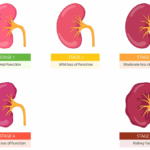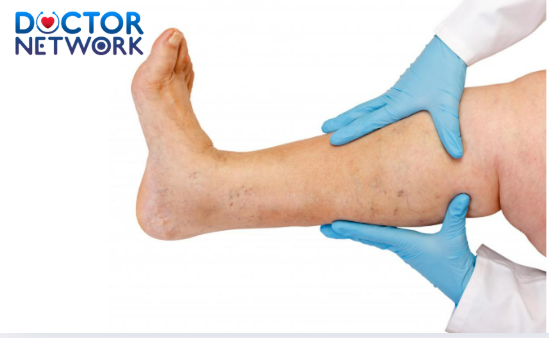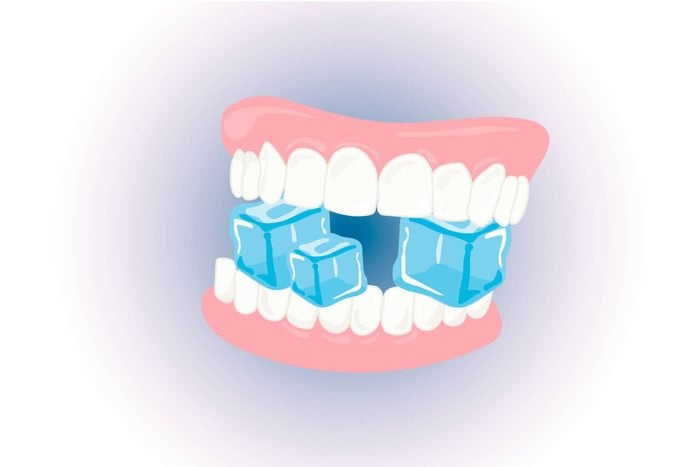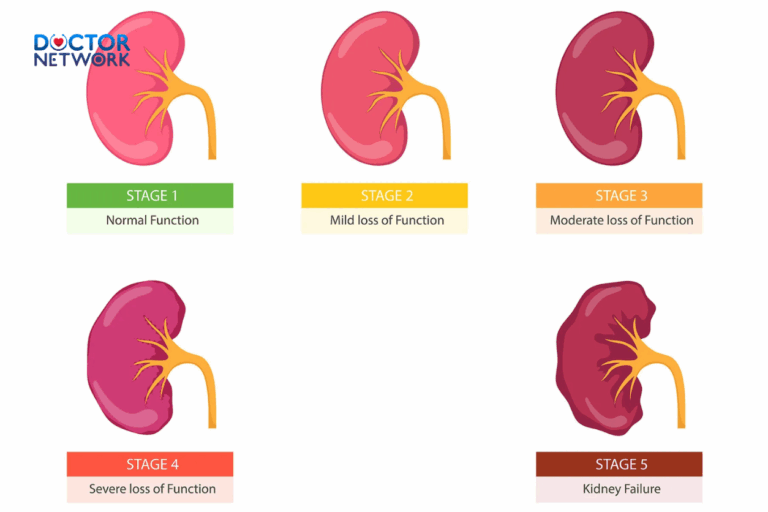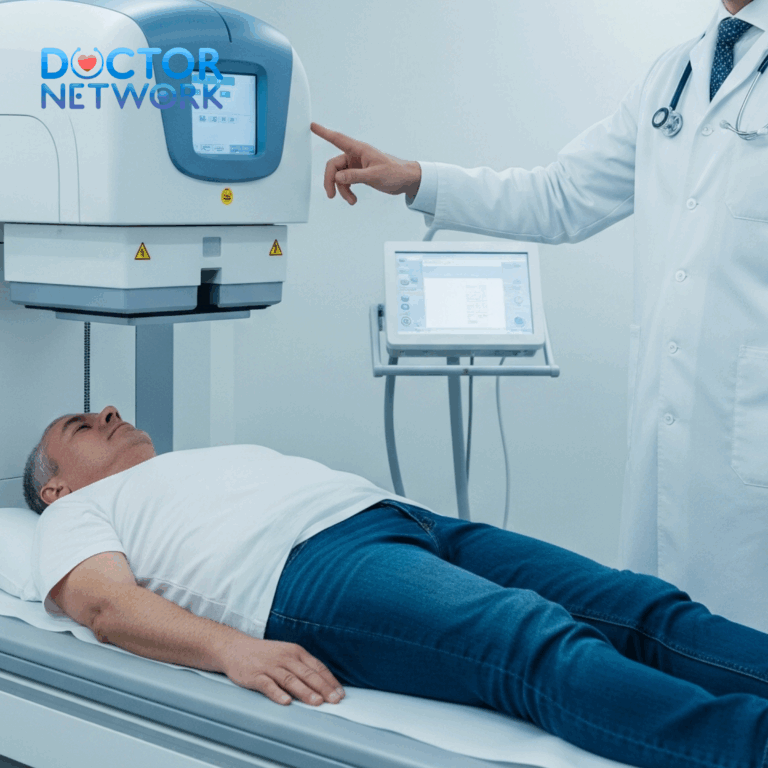Local anesthesia typically lasts between 30 minutes to 8 hours, depending on the specific anesthetic agent used, dosage administered, and individual patient factors. This targeted numbing technique blocks nerve signals in specific body regions, allowing patients to remain conscious and alert during minor medical procedures while experiencing complete pain relief in the treated area.
How Long Does Local Anesthesia Last? Understanding the duration of local anesthesia proves essential for patients preparing for dental work, minor surgeries, dermatological procedures, or pain management treatments. The numbing sensation’s longevity varies significantly based on multiple variables including the type of anesthetic medication (lidocaine, bupivacaine, mepivacaine), administration method, injection site, patient metabolism, and use of adjuvant medications like epinephrine.
This comprehensive guide explores how local anesthetics function, examines different anesthetic agents and their expected durations, analyzes factors influencing effectiveness, discusses common medical applications, and provides detailed recovery information. We’ll also compare local versus general anesthesia, outline preparation requirements, address potential risks and complications, and offer guidance for managing the wearing-off process.

Local Anesthesia Last
How Local Anesthesia Works
Local anesthetics function by temporarily blocking sodium channels in nerve cell membranes, preventing the transmission of pain signals from the injection site to the brain. This neurological blockade occurs through the anesthetic molecules binding to voltage-gated sodium channels, effectively stopping action potential propagation along nerve fibers.
The mechanism involves the anesthetic agent disrupting the normal depolarization process in nerve cells. When injected into tissues, the medication diffuses through cell membranes and reversibly binds to specific receptor sites on sodium channels. This binding prevents sodium ions from entering the nerve cells, which eliminates the electrical impulses that would normally carry pain sensations to the central nervous system.
The blockade remains temporary because the anesthetic molecules eventually dissociate from the sodium channels and get metabolized or redistributed away from the injection site. As drug concentrations decrease, nerve function gradually returns, restoring both sensation and motor function in the affected area. This reversible process ensures that patients regain full feeling and movement once the medication’s effects diminish.
Types and Administration Methods
Common Anesthetic Agents
Healthcare providers utilize various local anesthetic medications, each offering distinct characteristics regarding onset time, duration, and potency:
Lidocaine serves as the most frequently used local anesthetic in clinical practice. This versatile agent provides rapid onset within 5-10 minutes and maintains effectiveness for approximately 1-2 hours. Medical professionals commonly employ lidocaine for dental procedures, minor skin surgeries, and nerve blocks due to its excellent safety profile and predictable duration.
Bupivacaine offers significantly longer-lasting anesthesia, providing numbness for 4-8 hours or potentially longer. This extended-duration agent proves particularly valuable for complex procedures requiring prolonged pain relief or postoperative comfort. Surgeons frequently choose bupivacaine for orthopedic procedures, major dental work, and pain management applications.
Mepivacaine delivers intermediate-duration anesthesia lasting 1-3 hours with rapid onset characteristics. This anesthetic agent works well for procedures requiring moderate duration without the extended effects of bupivacaine. Dental professionals often prefer mepivacaine for routine fillings and extractions.
Tetracaine provides 2-4 hours of anesthesia and is commonly used in spinal anesthesia applications. Cocaine (used topically in limited medical situations) offers 30-60 minutes of numbing effect. Benzocaine serves primarily for topical applications, while Ropivacaine provides long-lasting anesthesia similar to bupivacaine with potentially fewer cardiac side effects.
Administration Methods
Local anesthetics can be delivered through multiple routes, each affecting onset time and duration characteristics:
- Topical applications include creams, gels, ointments, sprays, and skin patches applied directly to mucous membranes or skin surfaces
- Injectable forms involve subcutaneous, intramuscular, or deeper tissue injections using various needle sizes and techniques
- Nerve blocks target specific nerve pathways to achieve regional anesthesia in larger anatomical areas
- Specialized techniques such as epidural and spinal anesthesia for obstetric and surgical procedures
- Ocular preparations including eye drops for ophthalmic procedures
- Implantable devices for extended pain management in chronic conditions
Healthcare professionals including physicians, dentists, surgeons, anesthesiologists, nurse anesthetists, dermatologists, emergency medicine providers, nurse practitioners, physician assistants, ophthalmologists, and primary care providers administer local anesthesia based on their training and scope of practice.
Duration of Local Anesthesia
General Duration Expectations
Local anesthesia duration typically ranges from 30 minutes to several hours, with most applications lasting 1-4 hours under standard conditions. The numbing effect begins shortly after administration and reaches peak effectiveness within 10-20 minutes, depending on the specific agent and injection technique used.
Shorter-acting anesthetics like topical benzocaine may provide 30-60 minutes of relief, while intermediate agents such as lidocaine maintain effectiveness for 1-2 hours. Longer-lasting formulations like bupivacaine can deliver 4-8 hours of continuous anesthesia, with some specialized preparations extending beyond 12 hours.
Certain ultra-long-acting anesthetic combinations or sustained-release formulations may provide numbness lasting up to 24 hours, particularly useful for complex surgical procedures or intensive pain management protocols. These extended-duration options typically incorporate additives or specialized delivery systems to maintain therapeutic levels over prolonged periods.
Duration by Anesthetic Type
| Anesthetic Agent | Typical Duration | Onset Time | Common Applications |
|---|---|---|---|
| Lidocaine | 1-2 hours | 5-10 minutes | Dental work, minor surgery, biopsies |
| Bupivacaine | 4-8 hours | 10-20 minutes | Complex procedures, nerve blocks |
| Mepivacaine | 1-3 hours | 5-15 minutes | Dental procedures, minor surgeries |
| Tetracaine | 2-4 hours | 10-15 minutes | Spinal anesthesia, topical applications |
| Cocaine (topical) | 30-60 minutes | 5-10 minutes | Limited medical use |
| Benzocaine | 30-60 minutes | 2-5 minutes | Topical numbing, minor procedures |
The duration variations reflect differences in molecular structure, protein binding characteristics, lipid solubility, and metabolic pathways. These pharmacological properties determine how quickly the anesthetic agent penetrates nerve tissues, how long it remains active, and how rapidly the body eliminates the medication.
Factors Influencing Duration
Anesthetic Agent Selection
The specific type of local anesthetic chosen significantly impacts duration expectations. Short-acting agents like procaine and chloroprocaine provide 30-60 minutes of anesthesia, while intermediate-duration medications such as lidocaine and mepivacaine last 1-3 hours. Long-acting anesthetics including bupivacaine, ropivacaine, and levobupivacaine extend numbness for 4-12 hours or longer.
Chemical structure differences explain these duration variations. Ester-type anesthetics (procaine, chloroprocaine, tetracaine) undergo rapid hydrolysis by plasma cholinesterases, resulting in shorter action periods. Amide-type anesthetics (lidocaine, bupivacaine, mepivacaine) require hepatic metabolism, leading to prolonged effects and more predictable duration patterns.
Dosage Considerations
Higher anesthetic doses generally produce longer-lasting numbness, though this relationship follows a logarithmic rather than linear pattern. Doubling the dose doesn’t necessarily double the duration, but increased concentrations do extend the effective period by saturating more sodium channels and maintaining therapeutic levels longer.
Healthcare providers carefully calculate optimal doses based on patient weight, procedure complexity, desired duration, and maximum safe limits for each medication. Exceeding recommended dosages increases systemic toxicity risks without proportional duration benefits, making precise dosing crucial for both safety and effectiveness.
Anatomical Location Effects
Blood flow characteristics at the injection site profoundly influence anesthetic duration. Highly vascular areas such as the face, scalp, and oral cavity experience faster drug clearance, resulting in shorter anesthesia periods. The rich blood supply rapidly redistributes the anesthetic away from nerve tissues, diminishing effectiveness sooner than in less vascular regions.
Conversely, areas with limited blood flow including hands, feet, and certain deeper tissue planes maintain anesthetic concentrations longer, extending numbness duration. Injection depth also matters, as superficial administration allows faster systemic absorption compared to deeper placements near target nerves.
For dental procedures, sensation typically returns to teeth before surrounding soft tissues like lips, cheeks, and tongue due to different nerve pathway characteristics and varying anesthetic penetration depths.
Patient-Specific Variables
Individual patient factors create significant duration variability even when using identical anesthetic agents and doses. Age affects metabolism rates, with younger patients often processing medications faster, potentially shortening anesthetic effects. Elderly patients may experience prolonged duration due to slower hepatic metabolism and altered drug distribution.
Patient health status influences anesthetic duration through multiple mechanisms. Cardiovascular conditions affecting blood flow can alter drug distribution and clearance. Liver disease may slow amide-type anesthetic metabolism, extending duration unpredictably. Kidney dysfunction can affect drug elimination, particularly for metabolites requiring renal clearance.
Individual sensitivity variations result from genetic differences in sodium channel structure, metabolic enzyme activity, and pain threshold variations. Some patients naturally require higher doses or experience shorter durations due to these inherent biological differences.
Additive Medications
Combining local anesthetics with vasoconstrictor agents like epinephrine significantly extends anesthetic duration by reducing local blood flow and slowing drug absorption. Epinephrine additions can increase lidocaine duration from 1-2 hours to 2-4 hours, providing substantial clinical benefits for longer procedures.
Other additives including dexamedetomidine, clonidine, and corticosteroids can further prolong anesthetic effects through various mechanisms. These adjuvants may extend duration by 50-100% while potentially providing additional benefits such as reduced inflammation or enhanced pain control.
However, additive use requires careful consideration of contraindications, potential interactions, and increased complication risks. Patients with cardiovascular disease, hypertension, or certain medications may not be suitable candidates for epinephrine-containing solutions.
Common Uses of Local Anesthesia
Dental Applications
Dental procedures represent the most frequent application of local anesthesia in healthcare practice. Routine fillings, tooth extractions, crown preparations, root canal treatments, and gum disease therapy all rely on effective local numbing for patient comfort. Dental anesthesia typically involves infiltration injections around specific teeth or nerve block techniques for larger treatment areas.
Modern dental anesthesia utilizes primarily lidocaine and mepivacaine formulations, often combined with epinephrine for extended duration. The choice between agents depends on procedure length, patient medical history, and desired numbness duration. Complex procedures like multiple extractions or extensive periodontal work may require longer-acting anesthetics or repeated injections.
Specialized dental techniques include intraosseous injections directly into bone tissue, intraligamentary injections around tooth roots, and computer-controlled delivery systems for more comfortable administration. These advanced methods can provide more targeted anesthesia with reduced soft tissue numbness.
Surgical Procedures
Minor surgical interventions frequently employ local anesthesia to eliminate pain while maintaining patient consciousness. Dermatological procedures including skin biopsies, mole removals, cyst excisions, and minor skin cancer surgeries commonly use local anesthetic infiltration around the operative site.
Wound repair and suturing procedures rely heavily on local anesthesia for patient comfort during cleaning, exploration, and closure. Emergency department providers routinely use lidocaine injections before repairing lacerations, removing foreign objects, or performing other urgent procedures.
Plastic surgery applications include minor cosmetic procedures such as brow lifts, eyelid surgery, lip enhancements, and small lesion removals. These procedures often combine local anesthesia with light sedation for optimal patient comfort and surgical precision.
Pain Management Applications
Chronic pain management frequently incorporates local anesthetic nerve blocks for both diagnostic and therapeutic purposes. These targeted injections can provide temporary relief for conditions including arthritis, neuropathy, complex regional pain syndrome, and cancer-related pain.
Epidural and spinal anesthesia applications extend beyond surgical procedures to include chronic pain management protocols. Long-acting local anesthetics delivered through specialized catheters can provide extended pain relief for patients with severe chronic conditions.
Trigger point injections utilize local anesthetics to treat muscle pain and fibromyalgia symptoms. These targeted treatments can break pain cycles and provide significant relief when combined with physical therapy and other interventions.
Obstetric Applications
Labor and delivery procedures commonly employ epidural anesthesia combining local anesthetics with opioid medications for comprehensive pain management. This technique allows mothers to remain alert and participate in delivery while experiencing significant pain reduction.
Cesarean section procedures may utilize spinal anesthesia with long-acting local anesthetics, providing complete surgical anesthesia while allowing mothers to remain conscious during delivery. These techniques offer excellent safety profiles compared to general anesthesia for both mother and baby.
Postpartum procedures including episiotomy repairs, laceration suturing, and other interventions rely on local anesthetic infiltration for patient comfort during recovery.
Local Anesthesia vs. General Anesthesia
Fundamental Differences
Local anesthesia creates targeted numbness in specific body regions while preserving patient consciousness, alertness, and normal physiological functions. Patients remain able to communicate, maintain their own breathing, and experience no memory loss during procedures under local anesthesia.
General anesthesia induces complete unconsciousness, eliminating all sensation throughout the entire body while requiring intensive monitoring and support of vital functions. Patients under general anesthesia cannot respond to stimuli, may require mechanical ventilation assistance, and typically experience no memory of the procedure.
Safety Considerations
| Aspect | Local Anesthesia | General Anesthesia |
|---|---|---|
| Consciousness | Maintained | Eliminated |
| Breathing | Natural | May require assistance |
| Monitoring | Basic | Intensive |
| Recovery Time | Minutes to hours | Hours |
| Complications | Minor, rare | More serious potential |
| Pre-procedure Fasting | Usually unnecessary | Required |
Local anesthesia generally presents fewer risks and complications compared to general anesthesia. The targeted nature of local anesthetics minimizes systemic effects, reducing the likelihood of serious adverse reactions. Most local anesthesia complications remain minor and temporary, including injection site soreness, temporary weakness, or brief dizziness.
General anesthesia carries inherently higher risks due to its systemic effects on cardiovascular, respiratory, and neurological functions. Potential complications include aspiration pneumonia, cardiac arrhythmias, respiratory depression, awareness during surgery, and postoperative nausea and vomiting.
Clinical Applications
Healthcare providers choose between local and general anesthesia based on procedure complexity, duration requirements, patient medical status, and surgical site accessibility. Minor procedures lasting under two hours in accessible locations typically utilize local anesthesia effectively.
Complex surgeries requiring muscle relaxation, patient immobility, airway management, or involving multiple body systems necessitate general anesthesia. Procedures lasting several hours or requiring patient positioning that would be uncomfortable while conscious also favor general anesthesia.
Patient preference and anxiety levels influence anesthesia selection, though medical factors take precedence in decision-making. Some patients with severe needle phobia or claustrophobia may require sedation or general anesthesia even for minor procedures.
Preparing for Local Anesthesia
Pre-Procedure Assessment
Comprehensive medical history review identifies potential complications or contraindications before local anesthesia administration. Healthcare providers evaluate previous anesthetic experiences, known drug allergies, current medications, and relevant medical conditions that might affect anesthetic effectiveness or safety.
Specific attention focuses on previous adverse reactions to local anesthetics, including allergic responses, prolonged numbness, or unusual side effects. True allergic reactions to local anesthetics remain rare, but documented reactions require alternative agent selection or additional precautions.
Current medication review identifies potential interactions with local anesthetics or additives like epinephrine. Blood thinning medications, cardiac medications, and certain psychiatric drugs may require dosage adjustments or timing modifications around procedures involving local anesthesia.
Fasting Requirements
Most procedures using only local anesthesia require no pre-procedure fasting, allowing patients to eat and drink normally before treatment. This convenience represents a significant advantage over general anesthesia, which requires 6-8 hours of fasting to prevent aspiration complications.
Exceptions include procedures involving the digestive system, bladder, or situations where conversion to general anesthesia remains possible. Complex procedures with sedation may also require limited fasting to reduce nausea and vomiting risks.
Emergency procedures using local anesthesia typically proceed regardless of recent food intake, as the benefits of immediate treatment outweigh minimal aspiration risks associated with conscious patients.
Psychological Preparation
Addressing patient anxiety and fear, particularly needle phobia (trypanophobia), improves procedure tolerance and outcomes. Healthcare providers can employ various techniques including detailed explanations, relaxation methods, topical anesthetics before injection, and gradual desensitization approaches.
Communication about expected sensations, procedure duration, and post-procedure expectations helps reduce anxiety and improve patient cooperation. Understanding what to expect during injection and the gradual onset of numbness provides reassurance for anxious patients.
Some patients benefit from mild sedation combined with local anesthesia for anxiety management while maintaining the safety advantages of remaining conscious during procedures.
The Wearing Off Process and Recovery
Sensation Return Patterns
Local anesthesia effects diminish gradually as drug concentrations decrease and nerve function returns progressively. The wearing-off process typically begins 1-2 hours after injection for short-acting agents, though complete sensation return may take additional time depending on the anesthetic used and individual factors.
Initial signs of returning sensation include tingling feelings, mild throbbing, or awareness of touch in previously numb areas. These sensations indicate nerve function recovery and signal the approaching end of anesthetic effectiveness.
For dental procedures, sensation commonly returns to teeth before surrounding soft tissues including lips, cheeks, and tongue. This pattern occurs because different nerve types and locations recover at varying rates based on anesthetic penetration depth and local blood flow characteristics.
Managing the Transition Period
Pain management during the wearing-off phase prevents discomfort as sensation returns. Over-the-counter pain relievers including ibuprofen, acetaminophen, or naproxen provide effective relief for mild to moderate post-procedure discomfort when taken before numbness completely resolves.
Ice application helps reduce swelling and may prolong numbness slightly while providing additional comfort. Cold packs applied for 15-20 minutes at intervals can minimize inflammation and associated pain during recovery.
Conversely, warm compresses or gentle massage increase local blood flow, potentially accelerating anesthetic clearance for patients wanting faster sensation return. This technique proves particularly useful when prolonged numbness becomes problematic for eating or speaking.
Post-Procedure Precautions
Patients must avoid biting, chewing, or applying pressure to numb areas to prevent inadvertent injury. The absence of pain sensation makes accidental trauma to lips, cheeks, tongue, or gums possible during eating or speaking.
Hot beverages and foods should be avoided until sensation returns completely, as burn injuries can occur without patient awareness. Testing temperature with non-numb areas helps prevent thermal injuries during recovery.
Speaking difficulties may persist for several hours after dental procedures affecting oral tissues. Patients should speak slowly and carefully to avoid biting numb areas while articulating words.
Activity Restrictions
Driving restrictions depend on procedure location and potential effects on motor function or vision. Most minor procedures using local anesthesia allow normal driving once immediate procedure effects resolve, typically within 30-60 minutes.
Procedures affecting limb function, facial sensation that might impair vision, or those combined with sedation may require transportation arrangements. Patients should have someone available to drive if uncertainty exists about their ability to operate vehicles safely.
Work and activity resumption guidelines vary by procedure type and occupation requirements. Desk work typically resumes immediately, while physical labor or activities requiring fine motor control may need temporary modification until sensation returns completely.
What to Do If Numbness Persists
Expected vs. Concerning Duration
Normal anesthetic duration varies significantly based on agent type, dose, location, and individual factors, but most effects resolve within 4-8 hours for standard applications. Patients should receive specific guidance about expected numbness duration for their particular procedure and anesthetic used.
Persistent numbness extending significantly beyond predicted timelines warrants medical evaluation. While individual variation is normal, numbness lasting 12-24 hours longer than expected may indicate complications requiring professional assessment.
Concerning symptoms include progressive weakness, spreading numbness to unrelated areas, persistent pain despite numbness, or signs of infection at injection sites. These symptoms require prompt communication with healthcare providers for proper evaluation.
Potential Underlying Causes
Rare nerve damage represents the most serious cause of prolonged numbness, occurring in less than 1% of local anesthetic procedures. Nerve injury may result from direct needle trauma, excessive pressure from injection volume, or chemical irritation from anesthetic agents.
Hematoma formation at injection sites can compress nerves and prolong numbness through mechanical pressure. These collections of blood may require specific treatment or simply time for resolution, depending on size and location.
Infection at injection sites, though uncommon with proper sterile technique, can cause inflammation and prolonged symptoms. Signs include increasing pain, redness, swelling, warmth, or discharge at injection locations.
Healthcare Provider Response
Medical evaluation for persistent numbness includes thorough neurological examination, review of injection technique and medications used, and assessment for complications. Providers may perform sensation testing, motor function evaluation, and imaging studies if indicated.
Treatment approaches depend on underlying causes and may include observation, anti-inflammatory medications, physical therapy, or specialized interventions for nerve-related complications. Most cases resolve spontaneously with time and supportive care.
Follow-up scheduling ensures proper monitoring of recovery progress and early identification of patients requiring additional intervention. Documentation of persistent numbness helps identify patterns and improve future care quality.
Risks and Side Effects
Common Temporary Effects
Local anesthesia produces predictable temporary side effects that typically resolve as the medication wears off. Injection site soreness affects most patients and usually lasts 1-2 days, responding well to over-the-counter pain medications and cold application.
Mild dizziness or lightheadedness can occur immediately after injection, particularly in anxious patients or those receiving larger doses. These symptoms typically resolve within minutes and rarely require intervention beyond reassurance and brief rest.
Temporary muscle weakness in the injection area is normal and expected, particularly with motor nerve involvement. This weakness resolves as anesthetic effects diminish and doesn’t indicate permanent damage or complications.
Systemic Side Effects
Higher anesthetic doses or inadvertent intravascular injection can produce systemic effects including drowsiness, confusion, metallic taste sensations, or ringing in the ears (tinnitus). These symptoms typically appear within minutes of injection and resolve as drug levels decrease.
Cardiovascular effects from epinephrine-containing solutions may include temporary heart rate increases, mild blood pressure elevation, or palpitations. These effects are usually brief and well-tolerated in healthy patients but require caution in those with cardiac conditions.
Central nervous system effects including agitation, restlessness, or mild tremors can occur with higher doses or rapid absorption. These symptoms warrant monitoring but typically resolve without specific treatment as drug levels decline.
Serious Complications
Allergic Reactions to local anesthetics are rare but potentially serious, occurring in less than 1% of administrations. True allergic reactions typically develop within minutes of injection and may include hives, swelling, difficulty breathing, or cardiovascular collapse requiring immediate emergency treatment.
Most reported “allergic” reactions actually represent vasovagal responses (fainting), anxiety reactions, or responses to epinephrine rather than true drug allergies. Proper evaluation helps distinguish between actual allergic responses and other adverse reactions.
Local Anesthetic Systemic Toxicity (LAST) represents the most serious potential complication, occurring when excessive amounts of anesthetic enter the bloodstream. Early symptoms include agitation, confusion, dizziness, and metallic taste, potentially progressing to seizures, cardiac arrhythmias, or cardiovascular collapse.
LAST treatment requires immediate recognition and appropriate intervention including supportive care, seizure management, and specialized lipid emulsion therapy in severe cases. Proper dosing, aspiration before injection, and incremental administration help prevent this rare but serious complication.
Nerve Damage from local anesthesia remains extremely uncommon, occurring in fewer than 1 in 10,000 procedures. When it does occur, nerve injury may result from direct mechanical trauma, chemical irritation, or ischemia from excessive injection pressure.
Most nerve-related complications are temporary and resolve within weeks to months with supportive care. Permanent nerve damage is exceptionally rare and typically involves pre-existing anatomical variations or technical factors during injection.
Risk Mitigation Strategies
Proper patient screening identifies individuals at higher risk for complications, including those with known allergies, cardiac conditions, or previous adverse reactions. Detailed medical histories and appropriate precautions reduce complication rates significantly.
Appropriate dosing based on patient weight, age, and medical status prevents overdose-related complications. Healthcare providers must calculate maximum safe doses and avoid exceeding recommended limits for each anesthetic agent.
Proper injection technique including aspiration before injection, incremental dosing, and anatomical knowledge minimizes risks of intravascular injection and nerve trauma. Continuing education and skill maintenance ensure optimal safety standards.
The Provider’s Decision-Making Process
Anesthetic Selection Criteria
Healthcare providers consider multiple factors when selecting specific local anesthetic agents for procedures. Primary considerations include required procedure duration, desired onset speed, patient medical history, and anatomical location characteristics.
Short procedures lasting under one hour typically utilize rapid-onset, shorter-duration agents like lidocaine or mepivacaine. Extended procedures or those requiring prolonged postoperative pain control benefit from longer-acting agents such as bupivacaine or ropivacaine.
Patient-specific factors including age, medical conditions, current medications, and previous anesthetic experiences influence agent selection. Elderly patients may require dose adjustments, while those with cardiac conditions might need epinephrine-free formulations.
Dosage Calculations
Precise dosage calculations consider patient weight, maximum safe doses for chosen agents, procedure requirements, and desired effect duration. Providers must balance adequate anesthesia with safety margins to prevent systemic toxicity.
Maximum recommended doses vary by anesthetic type and patient factors. Lidocaine limits typically range from 4-7 mg/kg depending on epinephrine inclusion, while bupivacaine limits are lower at 2-3 mg/kg due to higher potency and toxicity potential.
Multiple injection sites require careful dose tracking to avoid exceeding total safe limits. Providers must account for cumulative doses when using multiple injections or combining different anesthetic agents.
Administration Technique Selection
Injection method selection depends on anatomical considerations, procedure requirements, and provider expertise. Superficial infiltration works well for skin procedures, while deeper nerve blocks provide more extensive anesthesia for complex interventions.
Topical applications suit mucosal surfaces and minor skin procedures but provide limited penetration depth. Injectable forms offer more precise control and deeper tissue penetration but require proper technique to ensure safety and effectiveness.
Specialized techniques like nerve blocks require additional training and anatomical knowledge but can provide superior anesthesia with lower total drug doses. These methods may reduce systemic absorption and extend duration compared to local infiltration.
The Importance of Communication
Pre-Procedure Discussions
Effective communication between healthcare providers and patients establishes realistic expectations and reduces anxiety about local anesthesia procedures. Patients benefit from understanding the injection process, expected sensations, and anticipated duration of numbness.
Detailed discussions about medical history, current medications, and previous anesthetic experiences help providers identify potential complications and select optimal anesthetic approaches. Patients should feel comfortable sharing concerns about pain, anxiety, or previous adverse reactions.
Clear explanations of post-procedure expectations, including normal sensations during recovery, activity restrictions, and signs warranting medical attention, improve patient compliance and satisfaction with care.
Managing Patient Anxiety
Needle phobia (trypanophobia) affects significant numbers of patients and requires sensitive management approaches. Providers can employ various techniques including topical anesthetics, distraction methods, relaxation techniques, and graduated exposure strategies.
Detailed explanations of injection techniques, including steps taken to minimize discomfort, help anxious patients feel more in control. Some patients benefit from knowing when the injection will occur, while others prefer distraction during administration.
Sedation options for extremely anxious patients can improve tolerance while maintaining local anesthesia safety advantages. Light sedation combined with local anesthesia provides excellent patient comfort for most minor procedures.
Post-Procedure Communication
Clear post-procedure instructions ensure patients understand normal recovery expectations and know when to seek additional care. Written instructions supplement verbal communication and provide reference materials for later questions.
Contact information for questions or concerns should be readily available, with specific guidance about when to call during normal hours versus seeking emergency care. Patients appreciate knowing their providers remain accessible for post-procedure support.
Follow-up scheduling for complex procedures or high-risk patients demonstrates commitment to comprehensive care and allows early identification of any developing complications.
Pre-Operative Assessment Role of Primary Care
Medical Optimization
Primary care physicians play crucial roles in preparing patients for procedures requiring local anesthesia, particularly for complex cases or patients with multiple medical conditions. Comprehensive health assessments identify factors that might affect anesthetic safety or effectiveness.
Medication management before procedures involving local anesthesia may require adjustments to blood thinners, cardiac medications, or other drugs that could interact with anesthetic agents or affect healing. Primary care providers coordinate these changes with procedural specialists.
Chronic disease management optimization before elective procedures improves outcomes and reduces complication risks. Well-controlled diabetes, hypertension, and other conditions contribute to better healing and fewer anesthetic complications.
Risk Assessment and Counseling
Primary care providers assess overall procedural risks and help patients make informed decisions about treatment options. They can explain how existing medical conditions might affect recovery and discuss realistic expectations for outcomes.
Patient education about procedure preparation, including any necessary lifestyle modifications, medication adjustments, or health optimization measures, often comes from trusted primary care relationships. These providers understand patient contexts and can tailor advice appropriately.
Anxiety management and emotional support from familiar primary care providers can significantly improve patient experiences with procedures requiring local anesthesia. Established therapeutic relationships provide comfort during stressful medical situations.
Comprehensive Recovery Guidelines by Procedure Type
Dental Procedure Recovery
Dental procedures utilizing local anesthesia require specific recovery considerations due to oral tissue involvement and eating/speaking difficulties. Patients should expect numbness lasting 2-4 hours for routine procedures, with soft tissue effects potentially persisting longer than tooth sensation.
Eating restrictions include avoiding hot foods and beverages until sensation returns completely to prevent thermal injuries. Soft foods that don’t require excessive chewing reduce risks of biting numb tissues. Patients should test food temperature with non-numb areas before consumption.
Speaking may be impaired for several hours due to lip, tongue, and cheek numbness. Patients should speak slowly and avoid excessive mouth opening to prevent biting numb tissues. Important conversations or presentations should be scheduled after sensation returns.
Dermatological Procedure Recovery
Skin procedures using local anesthesia typically involve smaller treatment areas with faster recovery times. Injection site care includes keeping areas clean and dry, avoiding excessive manipulation, and watching for signs of infection or unusual reactions.
Sun protection becomes particularly important for facial procedures, as numb skin may not provide normal pain signals if overexposure occurs. Patients should use appropriate sunscreen and limit sun exposure until sensation returns completely.
Activity modifications depend on procedure location and extent. Minor procedures may require only brief activity restrictions, while larger excisions might need several days of limited activity to promote proper healing.
Pain Management Procedure Recovery
Nerve blocks and pain management injections often involve larger anatomical areas and longer-acting anesthetics, requiring extended precautions. Patients may experience numbness or weakness lasting 6-12 hours or longer depending on agents used.
Mobility considerations are crucial when lower extremity nerve blocks affect walking or balance. Patients may need assistance with ambulation or temporary mobility aids until full function returns. Fall prevention becomes a priority during recovery.
Driving restrictions typically apply when nerve blocks affect limbs or when combined with sedation. Patients should arrange transportation and avoid operating machinery until full sensation and motor function return.
Conclusion
Local anesthesia duration varies significantly based on anesthetic type, dosage, injection location, individual patient factors, and use of adjuvant medications, typically lasting between 30 minutes to 8 hours. Understanding these variables helps patients and healthcare providers set appropriate expectations and plan accordingly for medical procedures.
The safety and effectiveness of local anesthesia make it an invaluable tool for comfortable minor procedures with minimal recovery requirements. Proper communication between patients and providers ensures optimal outcomes, appropriate preparation, and prompt recognition of any unusual circumstances requiring additional attention.
Patients should maintain open dialogue with healthcare providers about their experiences, concerns, and questions regarding local anesthesia. This collaborative approach promotes safety, improves satisfaction, and contributes to successful procedure outcomes while minimizing complications and anxiety.
Modern local anesthesia techniques continue advancing with new agents, delivery methods, and adjuvant options that improve patient comfort while maintaining excellent safety profiles. These developments make medical interventions more tolerable and accessible for patients requiring various procedures.
Here are 5 frequently asked questions about “how long does local anesthesia last,” along with their answers based on current medical information:
1. How long does local anesthesia typically last?
Local anesthesia usually numbs the targeted area for a duration ranging from 1 to 5 hours, depending on the type of anesthetic used and the dosage administered. For example, dental local anesthetics often last 2-3 hours for the tooth numbness and 3-5 hours for lips and tongue numbness.
2. What factors influence the duration of local anesthesia?
Several factors affect how long local anesthesia lasts, including:
The specific anesthetic agent used (e.g., lidocaine lasts 1-2 hours, bupivacaine up to 6 hours or more)
Dosage administered
Injection site and blood flow in that area (areas with higher blood flow may metabolize anesthetic faster)
Individual metabolism, age, and overall health.
3. Can local anesthesia effects last longer than expected?
Yes, depending on the anesthetic type and amount, effects can last longer. Some local anesthetics may numb an area for up to 8 hours or more, especially with long-acting agents like bupivacaine. Also, residual numbness might persist until the next morning in some cases.
4. Is it safe to have local anesthesia for multiple hours?
Local anesthesia is generally safe and designed to provide temporary numbness without affecting consciousness. The anesthetic typically wears off within hours, and patients recover quickly. However, the exact duration and safety depend on the anesthetic type and dosage, which your healthcare provider will tailor appropriately.
5. What should I do while the anesthetic is still active?
While numb, you should protect the anesthetized area from injury since you might not feel pain or pressure. Avoid chewing on the numb side of your mouth or touching the area to prevent accidental bites or burns. Sensation will gradually return, often starting with tingling, followed by normal feeling.
Specific Anesthetics and Their Durations (largely derived from Malamed and Becker & Reed, which synthesize numerous studies):
1. Lidocaine (e.g., Xylocaine)
* Without vasoconstrictor (e.g., 2% Lidocaine plain):
* Pulpal anesthesia: ~5-10 minutes
* Soft tissue anesthesia: ~60-120 minutes (1-2 hours)
* With vasoconstrictor (e.g., 2% Lidocaine with 1:100,000 epinephrine):
* Pulpal anesthesia: ~60 minutes
* Soft tissue anesthesia: ~180-300 minutes (3-5 hours)
* Evidence: As per tables in Malamed’s Handbook of Local Anesthesia (e.g., 7th Ed., Table 4-4) and Becker & Reed (2012, Table 2).
2. Mepivacaine (e.g., Carbocaine, Polocaine)
* Without vasoconstrictor (e.g., 3% Mepivacaine plain):
* Pulpal anesthesia: ~20-40 minutes
* Soft tissue anesthesia: ~120-180 minutes (2-3 hours)
* With vasoconstrictor (e.g., 2% Mepivacaine with 1:20,000 levonordefrin):
* Pulpal anesthesia: ~60 minutes
* Soft tissue anesthesia: ~180-300 minutes (3-5 hours)
* Evidence: As per tables in Malamed’s Handbook of Local Anesthesia and Becker & Reed (2012).
3. Articaine (e.g., Septocaine, Ultracaine)
* Almost always used with a vasoconstrictor.
* With vasoconstrictor (e.g., 4% Articaine with 1:100,000 or 1:200,000 epinephrine):
* Pulpal anesthesia: ~60-75 minutes
* Soft tissue anesthesia: ~180-360 minutes (3-6 hours)
* Evidence:
* Malamed’s Handbook of Local Anesthesia and Becker & Reed (2012).
* Specific Study:
* Authors: Mikesell, P., Nusstein, J., Reader, A., Beck, M., & Weaver, J.
* Title: A comparison of articaine and lidocaine for inferior alveolar nerve blocks.
* Journal: Journal of Endodontics
* Year: 2005
* Volume/Issue/Pages: 31(4), 265-270.
* Relevance: Compared efficacy including aspects related to onset and duration (though main focus was success rate, duration is implicitly linked). Found articaine often favorable.
* Link (DOI): https://doi.org/10.1097/01.don.0000140561.90150.1c
* Link (PubMed): https://pubmed.ncbi.nlm.nih.gov/15793365/
4. Prilocaine (e.g., Citanest)
* Without vasoconstrictor (4% Prilocaine plain – infiltration):
* Pulpal anesthesia: ~10-15 minutes
* Soft tissue anesthesia: ~90-120 minutes (1.5-2 hours)
* With vasoconstrictor (4% Prilocaine with 1:200,000 epinephrine):
* Pulpal anesthesia: ~60-90 minutes
* Soft tissue anesthesia: ~180-480 minutes (3-8 hours)
* Evidence:
* Malamed’s Handbook of Local Anesthesia and Becker & Reed (2012).
* Specific Comparative Study:
* Authors: Haas, D. A., Harper, D. G., Saso, M. A., & Young, E. R.
* Title: Comparison of articaine and prilocaine anesthesia by infiltration in the maxilla.
* Journal: Anesthesia Progress
* Year: 1990
* Volume/Issue/Pages: 37(5), 230–237.
* Relevance: This study directly compared the duration of pulpal anesthesia for articaine and prilocaine, finding articaine provided a longer mean duration.
* Link (PubMed Central – Full Free Text): https://www.ncbi.nlm.nih.gov/pmc/articles/PMC2148574/
* Link (PubMed): https://pubmed.ncbi.nlm.nih.gov/2051282/
Kiểm Duyệt Nội Dung
More than 10 years of marketing communications experience in the medical and health field.
Successfully deployed marketing communication activities, content development and social networking channels for hospital partners, clinics, doctors and medical professionals across the country.
More than 6 years of experience in organizing and producing leading prestigious medical programs in Vietnam, in collaboration with Ho Chi Minh City Television (HTV). Typical programs include Nhật Ký Blouse Trắng, Bác Sĩ Nói Gì, Alo Bác Sĩ Nghe, Nhật Ký Hạnh Phúc, Vui Khỏe Cùng Con, Bác Sỹ Mẹ, v.v.
Comprehensive cooperation with hundreds of hospitals and clinics, thousands of doctors and medical experts to join hands in building a medical content and service platform on the Doctor Network application.











